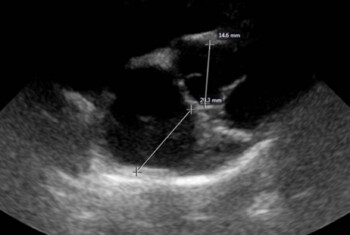Diagnosing canine hypoadrenocorticism can take some detective work.
Hypoadrenocorticism is known as the great pretender. Patients can present with a variety of vague clinical signs, which include vomiting, diarrhea, anorexia, and weight loss. These symptoms may be acute or wax and wane chronically. Any breed can develop hypoadrenocorticism, however standard poodles, Portuguese Water dogs, Nova Scotia Duck Tolling and bearded Collies have a predisposition. This disease is more commonly seen in young to middle-aged dogs but can present at any age.
Two classifications.
There are two classifications of hypoadrenocorticism: 1. Typical Addison’s – glucocorticoid and mineralocorticoid deficiency and 2. Atypical Addison’s – glucocorticoid deficiency with normal mineralocorticoid function. Atypical Addison’s is seen in up to 30% of dogs at the time of diagnosis.
Up to 92% of dogs with Addison’s will lack a stress leukogram and up 80% will have hyperkalemia and hyponatremia. Azotemia, anemia, hypercalcemia, hypoglycemia and metabolic acidosis can also be seen. Patients with atypical Addison’s will not have electrolyte derangements, as the hyperkalemia and hyponatremia occur secondary to aldosterone deficiency.
If there is concern for possible Addison’s, whether due to electrolyte derangements, waxing and waning GI symptoms or lack of stress leukogram, then a baseline/resting cortisol should be performed. A full ACTH stimulation test (gold standard) should be done if a patient is in a suspected Addisonian crisis.
If the resting/baseline cortisol is >2, then Addison’s disease has been ruled out. If it is less than 2, then an ACTH stimulation (Cortrosyn 5mcg/kg IV, no more than 1 vial/dog, cortisol level 1-hour post-administration) is needed to further evaluate for Addison’s. A lack of stimulation, cortisol <2, after Cortrosyn administration confirms Addison’s disease. Most exogenous steroids can affect the results and lead to artificially low cortisol levels.
Stabilizing the patient.
Acute management, including fluid therapy and treatment of hyperkalemia (Calcium gluconate, Terbutaline (0.01mg/kg IM) and/or dextrose +/- regular insulin), should be performed immediately to stabilize the patient while diagnostics are pending. The main treatment consists of a physiologic dose of prednisone (~0.1-0.2mg/kg/day), however if the dog is in crisis, then a higher prednisone dose should be started at 1mg/kg/day for 2-3 days, then tapered every few days to the lowest effective dose. Injectable dexamethasone SP may be required in an acute crisis.
In patients with typical Addison’s, DOCP (desoxycorticosterone, Percorten- V or Zycortal) 2.2mg/kg IM or SQ every 28 days is needed to maintain normal electrolyte levels after diagnosis is confirmed. Patients with atypical Addison’s can convert to typical Addison’s, so it is important to periodically monitor electrolytes and communicate other clinical signs to owners.
Hypoadrenocorticism has an excellent prognosis, however it is important for owners to understand that treatment will be lifelong.


